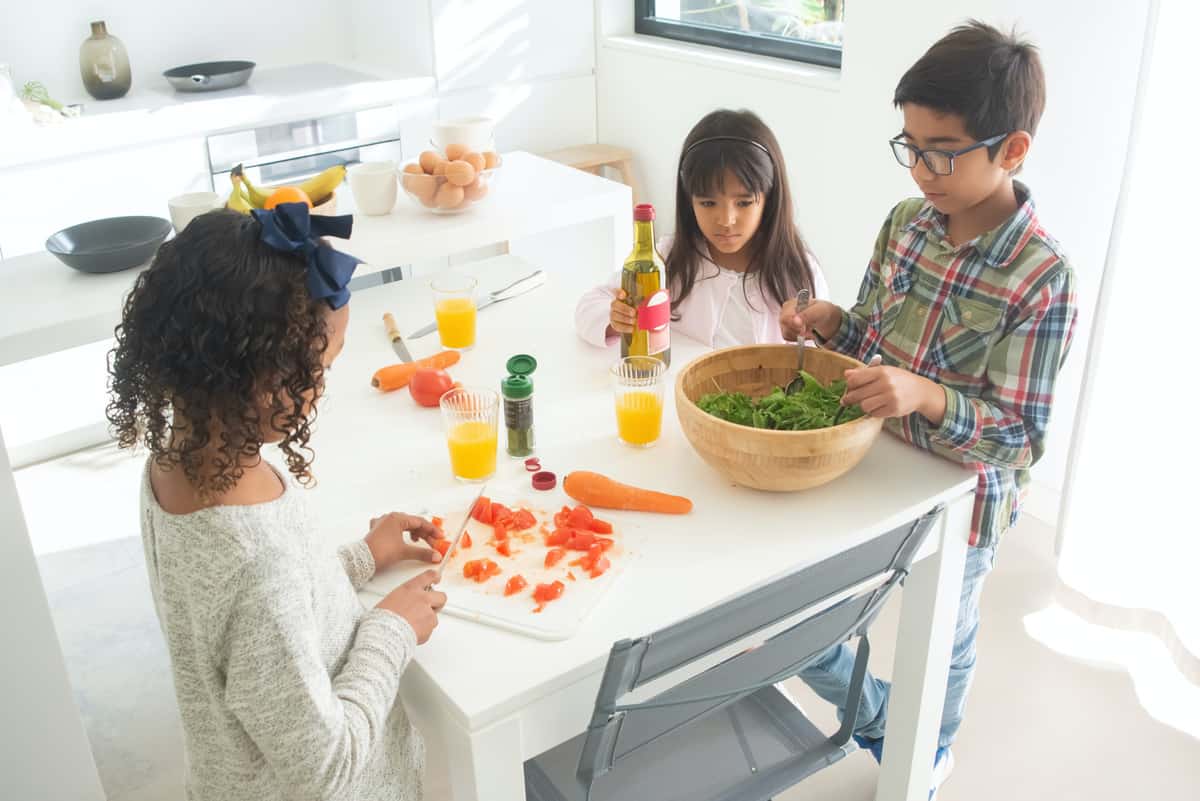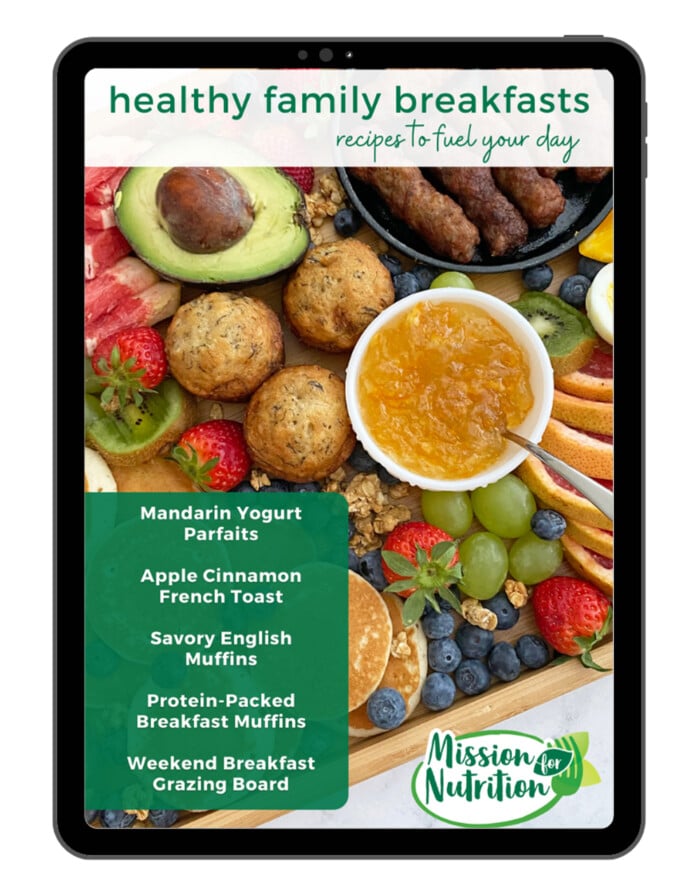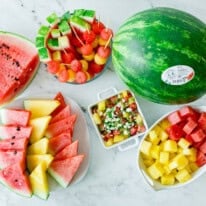Best Tips for Grocery Shopping on a Budget
For many families, the grocery bill is a big expense. Here are tips for grocery shopping on a budget, plus how to save on produce!
We all know that eating fruits and veggies at each meal is important, but feeding a growing family on a budget is hard work! It requires planning, patience and some insider know-how to navigate the produce department without breaking the bank.
The grocery bill is a big cost for most families and we hear from parents all the time that eating healthy is too expensive. When it comes to getting a nutritional bang for your buck, there’s no other place than in the produce department.
It should be no surprise that when you’re on a budget it really pays to plan your meals. Otherwise, you’ll find yourself in the store choosing convenience items or the first thing that you see which is not always the best value (or best for your body!).
I’m all for saving money wherever I can, so if you’re also looking for ways to spend less without sacrificing taste with the meals you make for yourself or family, read on for some great tips for grocery shopping on a budget.
Tips For Grocery Shopping On A Budget
Make a list and stick to it.
When buying fresh produce, remember that some items have a short shelf life. Limiting your purchase to the items on your list will help cut down on your grocery bill while helping cut down on food waste. Bought something, like spinach or bananas, that you can’t finish before they’re past their prime? Freeze them!
Buy Local
Transportation cost is one of the biggest factors in the price of produce. Fuel prices continue to rise and it becomes very expensive to truck a load of produce across the country. That cost will go into the price you see on the shelf. Choosing a local item over one from several states away will save you money.
Shop the sales & stock up.
This may sound obvious but when you find a good sale, take advantage of it! Before throwing that ad in the recycling bin, take a look on the front cover for any produce items. These items will be the best deals of the week. Next, look at the produce section elsewhere in the ad. Pay attention to the size of the picture. Sometimes, the bigger the block in the circular, the better the price! Don’t get the weekly ad? Check it out on the store app or website. The app is also a great place to score additional savings, rewards and scannable coupons.
Meal Plan
When you plan your meals, you can plan the menu based on what is on sale that week.
I especially like to take advantage of seasonal produce that is on sale. Our What’s in Season page breaks down which fresh produce items are in season each month.
Beyond just making them a snack or side dish, I like to find ways to incorporate them into a recipe. Check out these 10 Beginner’s Tips to Meal Planning Like a Pro for ideas if you’re unsure how to get started meal planning.
When you find a good deal, stock up! For example, when chicken breasts go on sale, I’ll grab a few packaged and store them in the freezer for when I need them later!
These 6 Tips for Freezer Meal Success may come in handy as you prep ingredients to use later which ultimately saves you money AND time!
Take your meal planning game to a new level – join us on a Mission for Nutrition! Grab a free ebook with 5 simple and easy breakfast recipes for your family!
Follow #MissionForNutrition on Healthy Family Project Instagram for meal prep ideas and more recipes.
Looking for more meal prep tips and healthy recipes? Check out these posts:
Know Your Produce Department
The front or feature table of your produce department (often the one you see as soon as you walk in) usually has the best deals. This table is where produce managers will display the items that are featured in the weekly ad and are on sale. Also, make sure to check out the end caps on each produce aisle, as they usually will have seasonal items displayed.
Throughout the week, a “hot buy” may come into the store that didn’t make it in time to be included in the weekly ad. This happens with items are at the end of their season or if the crop is doing well. Chat with your produce manager and he may tell you what just came in at a great deal.
Cut it Yourself And Have The Kids Help
Precut produce is extremely easy and convenient. It’s a timesaver and certainly helps me to include an extra fruit or vegetable on our dinner table! However, if you are looking to save money, cut your produce yourself. Often, precut items will be more expensive per pound.
Don’t be afraid to shop around
There are some stores that I have learned over the years have better prices than others on some of my favorite grocery items.
One way I’ve learned to keep track of this is to write it down. I keep a note going on my phone the different prices and at what store then I add them to a spreadsheet that I keep on my computer.
I might only focus on a certain item or category of items at a time and after a while, I’ve memorized many of them so I know how to recognize a good deal when I see it!
Coupons & Apps
The good old coupon – great for saving money on those items you buy all the time. I’m by no means an “extreme couponer” but if I see one that’s a good deal, I always snag it and keep in my wallet for the next trip to the store.
Many grocery stores now have digital coupons on their apps or website to make saving a few bucks simple and easy. Take a look before you head to the store to see where you can save on your list.
Other apps like Ibotta or Fetch will give you cash back when you buy certain items. Just scan you receipt for savings. Or, better yet, it connects to many retailer loyalty cards for instant savings.
Shop at wholesale stores.
Yes, even if you have a small family, you really can save money shopping at warehouse stores. But deciding what to stock up on depends on a few things.
I like to buy organic chicken breasts in bulk because I can divide them up and store them in the freezer until I’m ready to use.
Frozen fruits and vegetables are a great value at the warehouse club versus traditional grocery stores. Check out 10 Frozen Fruits and Veggies to Always Have on Hand for ideas on how to use them up.
Don’t have the space to store a lot? Consider splitting your purchases with a friend or family member to spread the savings.
Make sure you use what you have bought.
This sounds like a no-brainer, but how often do you toss out the last of the corn or find shriveled apples at the back of the fridge? Planning your meals helps with this because ideally when you know what you have, you’re more likely to incorporate it into your weekly menu.
We like to add all kinds of fruits and vegetables to our salads to reduce food waste at home. These 8 Tips for Eating More Salads may give you a few new ideas!
Don’t have time to use everything up? Toss your leftover veggies into a labeled freezer bag and pull them out when you need to make homemade chicken soup from scratch. Or puree them, freeze in ice cube trays and add them to soups or smoothies.
Hopefully, these ideas will help you learn how to save time and money in the kitchen and still eat well on a budget!



















